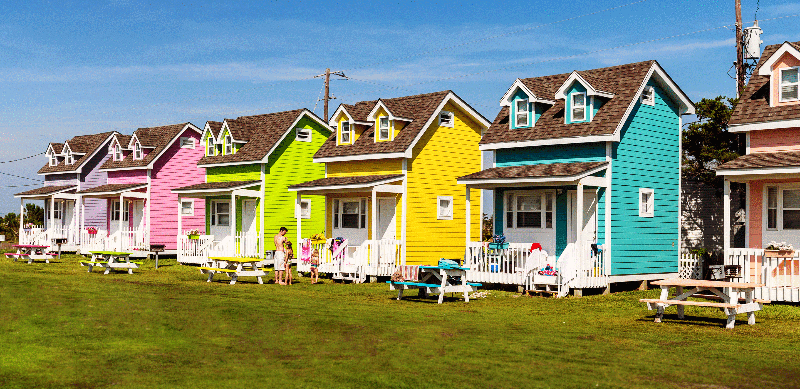
Big Dogs Tiny Houses
WHAT IS A TINY HOUSE?
A tiny house, and the industry that has sprung up around the movement, is just what the words say! Tiny houses are those homes that have about 400 square feet of living space, or less. If you are imagining what this looks like, you are probably thinking that the bedroom is about the size of a work cubicle! You are almost right! The “bedroom” is usually a loft that can only be reached via a steep ladder. Forget about standing up in that small space.
Down below in the living quarters, tiny homes actually look like regular homes but constructed in a much more compact manner. Everything is miniaturized. In many, the toilet and the shower share the same space. Most of these homes are transported by towing companies to a parcel of land that the owner owns or leases from someone else. Some homes come on wheels so that if the owner wants to move the home on a whim, all it takes is a pickup truck with a hitch to take it from place to place.
BIG DOGS TINY HOUSES
I have written about how important the size of home is when considering purchasing a dog. It is quite difficult to fit a Labrador Retriever in a small studio apartment. Considerations of what can fit into a tiny home are even more important than what size pet can fit into a regular sized home. Big dogs tiny houses can be a problem because of their respective sizes. Big dogs are just that- big! They need plenty of room to walk around and exercise. Tiny houses are just that- tiny! They are small and difficult for big dogs to maneuver around in. Sort of like a bull in a china shop.
IT CAN BE DONE!
Big dogs tiny houses can coexist if care is taken. Big dogs need plenty of exercise. If you own the land surrounding the home, invest in Invisible Fence. This is underground fencing that is installed and the animal is trained to respect the borders of the underground wiring by going through training. This training is performed easily by home owners. Walking the dog on a leash or even taking it to an acceptable dog park can burn off some of that extra energy!
The tricky part is leaving a large dog alone in a tiny house. The animal may destroy the home in your absence; particularly if it suffers from separation anxiety. Crate training might be an option but remember this is a tiny house and there would not be enough space for a crate to even fit in the small space. Consider specialized training by a dog trainer in your area. Better yet, you may be lucky and able to take your dog to work with you!
RISKS OF TINY HOME LIVING
Big dogs, tiny houses can also be risk prone. A small home is ultra compact without very much wiggle room. It has to be pet safe just like any other house but there are safety issues that need to be taken into consideration in these homes. The sleeping arrangement is hazardous at best. I have even wondered how any person could safely climb down those stairs in the middle of the night having to go to the bathroom; let ALONE a dog! The person or dog could easily get severely injured in such a fall.
Probably the best pet that would be the easiest to adapt to tiny house living would be a cat. Able to jump and dart off of any surface known to man, a tiny house would be a piece of cake for a cat to maneuver around in. Just try telling THAT to a dog!

